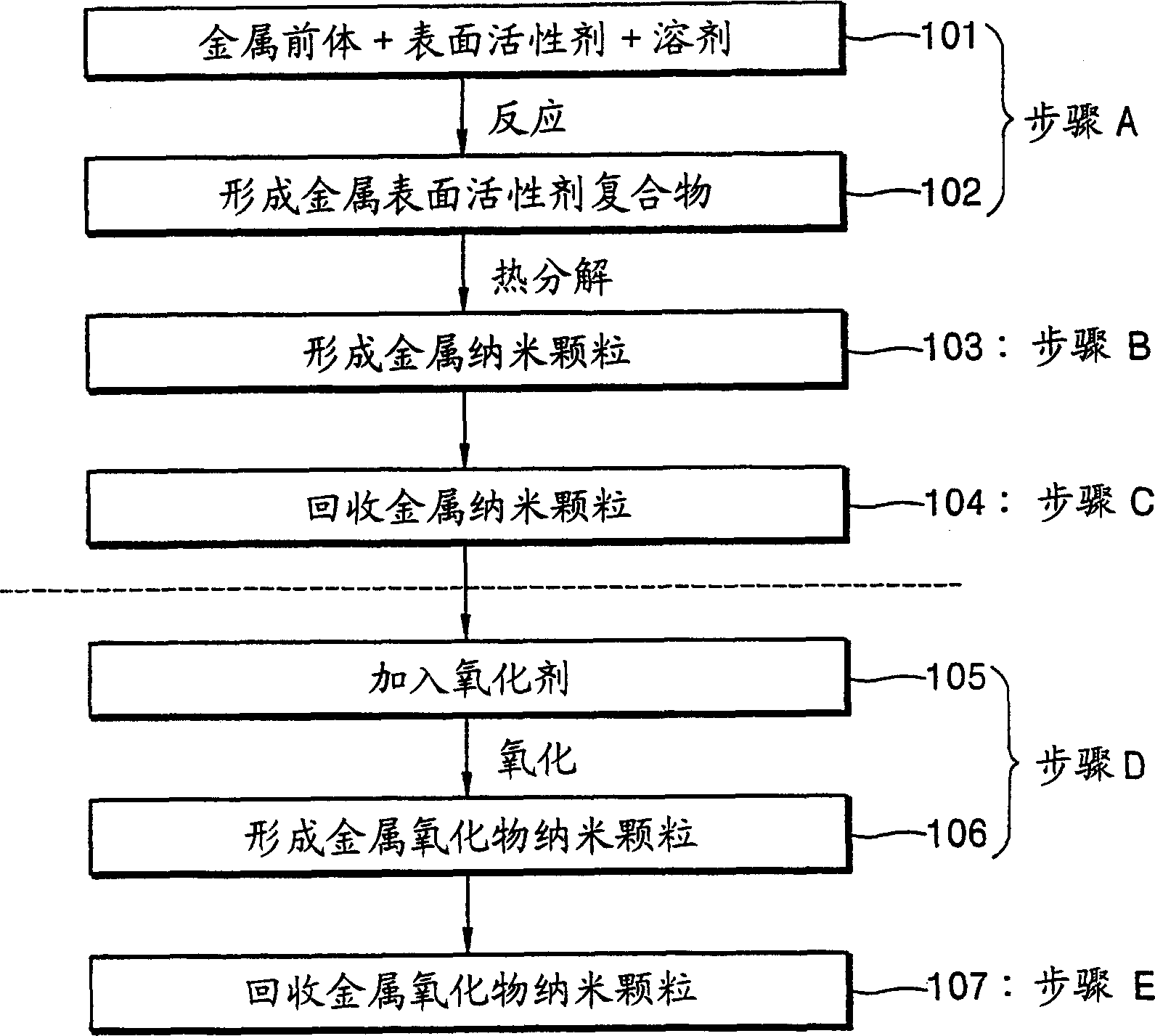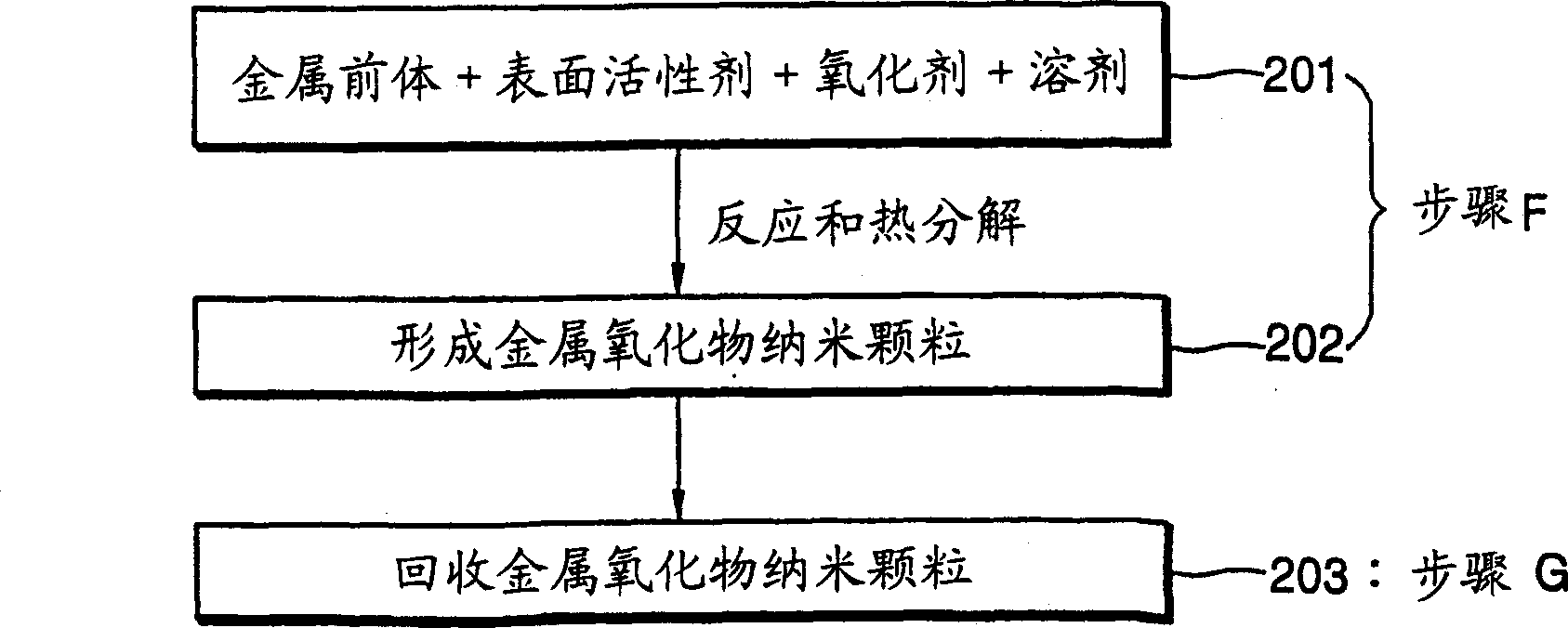Synthesis of mono-disperse and highly crystalline nano-particles of metals, alloys, metal-oxides, and multi-metallic oxides without a size-selection process
A technology of metal nanoparticles and nanoparticles, applied in the direction of oxygen/ozone/oxide/hydroxide, metal or alloy, iron oxide/iron hydroxide, etc., can solve the problem of difficult formation of superlattice, poor crystallinity, Problems such as irregular size of nanoparticles can achieve the effect of extending the performance and promoting the possibility of recycling and reuse
- Summary
- Abstract
- Description
- Claims
- Application Information
AI Technical Summary
Problems solved by technology
Method used
Image
Examples
Embodiment approach 1
[0054] Embodiment 1: Synthesis of monodisperse spherical iron nanoparticles
[0055] As a first exemplary embodiment of the synthesis of monodisperse spherical iron nanoparticles according to the present invention, 0.2 ml of iron pentacarbonyl [Fe(CO) 5 ] was added to a mixture containing 10 ml of dehydrated octyl ether and 1.25 g of oleic acid, and the resulting mixture was heated at 110° C. to obtain an iron-oleic acid complex, and the resulting reaction mixture was heated to reflux and aged at reflux temperature 1 hour. During this treatment, iron pentacarbonyl [Fe(CO) 5 ] complete thermal decomposition, resulting in iron atoms. The resulting solution was cooled to room temperature, and ethanol was added to produce a black precipitate, which was then separated by centrifugation. The resulting supernatant was removed. After this cleaning process was repeated at least three times, ethanol contained in the residue was removed by vacuum drying. The resulting product was ea...
Embodiment approach 2
[0056] Embodiment 2: Synthesis of monodisperse spherical iron oxide nanoparticles-1
[0057] Similar to the method described in Embodiment 1 above, in order to synthesize the monodisperse spherical iron oxide nanoparticles with a diameter of 7 nm of the present invention, 0.2 ml of iron pentacarbonyl [Fe(CO) 5 ] was added to a mixture containing 10 ml of dehydrated octyl ether and 1.25 g of oleic acid, and the resulting mixture was heated at 110° C. to form an iron-oleic acid complex. The resulting reaction mixture was heated to reflux and aged at reflux temperature for 1 hour. In this process, iron pentacarbonyl [Fe(CO) 5 ] complete thermal decomposition, resulting in iron atoms. In order to obtain monodisperse spherical iron oxide (maghemite, γ-Fe 2 o 3 ) nanoparticles, and the resulting red solution was cooled to room temperature. Then, 0.36 g of the oxidant trimethylamine N-oxide was added, and the resulting black mixture was heated to 300° C. and maintained at this t...
Embodiment approach 3
[0058] Embodiment 3: Synthesis of monodisperse spherical iron oxide nanoparticles-2
[0059] The same reaction conditions as described in Embodiment 2 were used to synthesize monodisperse spherical metal oxide nanoparticles with a diameter of 7 nm, except that the amount of surfactant used was reduced to 0.85 g. Figure 8 An exemplary TEM image of 7nm spherical iron oxide nanoparticles synthesized according to the present invention is shown, which shows that the 7nm spherical iron oxide nanoparticles are monodisperse.
PUM
| Property | Measurement | Unit |
|---|---|---|
| size | aaaaa | aaaaa |
| size | aaaaa | aaaaa |
| diameter | aaaaa | aaaaa |
Abstract
Description
Claims
Application Information
 Login to View More
Login to View More - R&D
- Intellectual Property
- Life Sciences
- Materials
- Tech Scout
- Unparalleled Data Quality
- Higher Quality Content
- 60% Fewer Hallucinations
Browse by: Latest US Patents, China's latest patents, Technical Efficacy Thesaurus, Application Domain, Technology Topic, Popular Technical Reports.
© 2025 PatSnap. All rights reserved.Legal|Privacy policy|Modern Slavery Act Transparency Statement|Sitemap|About US| Contact US: help@patsnap.com



